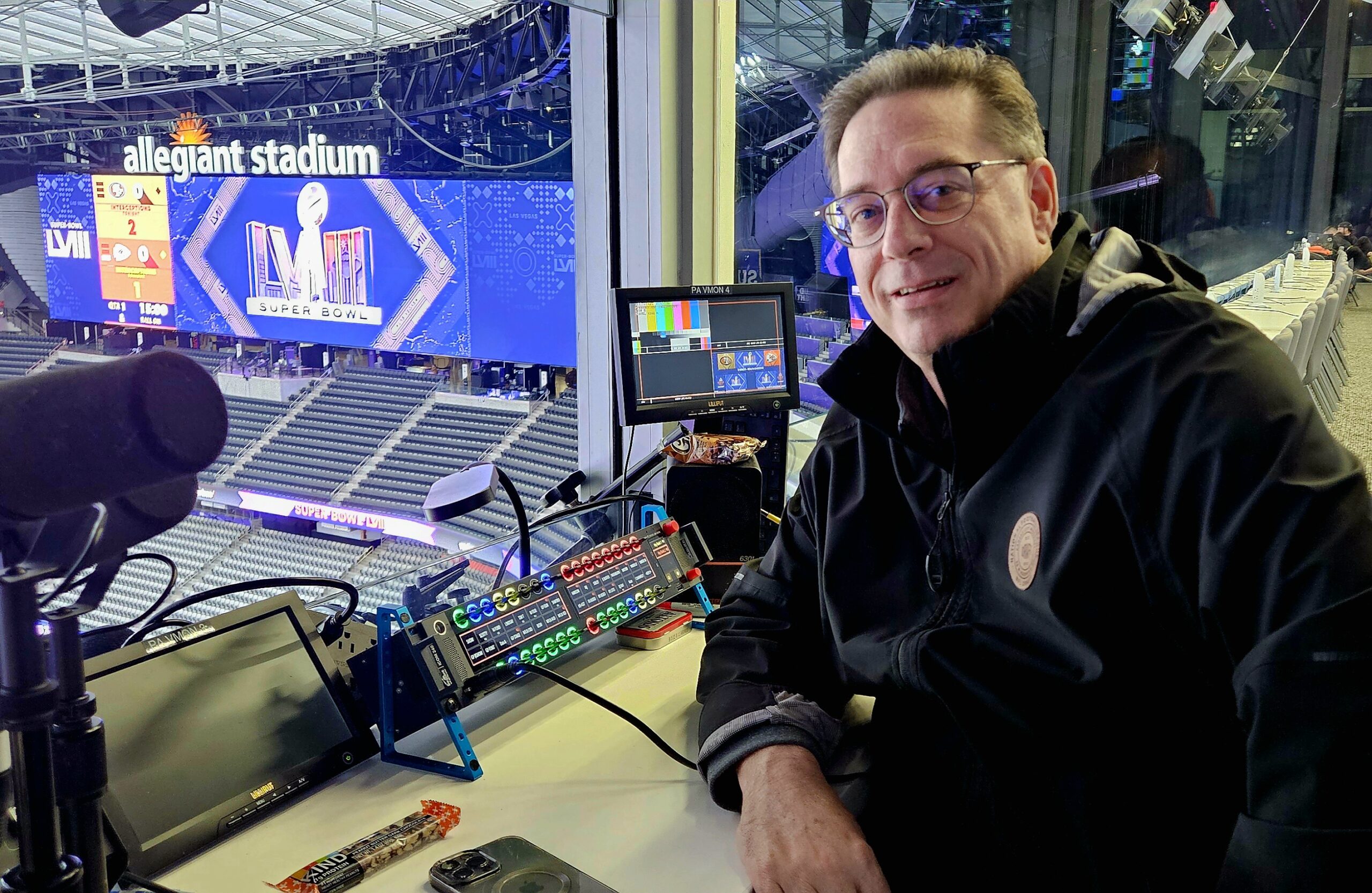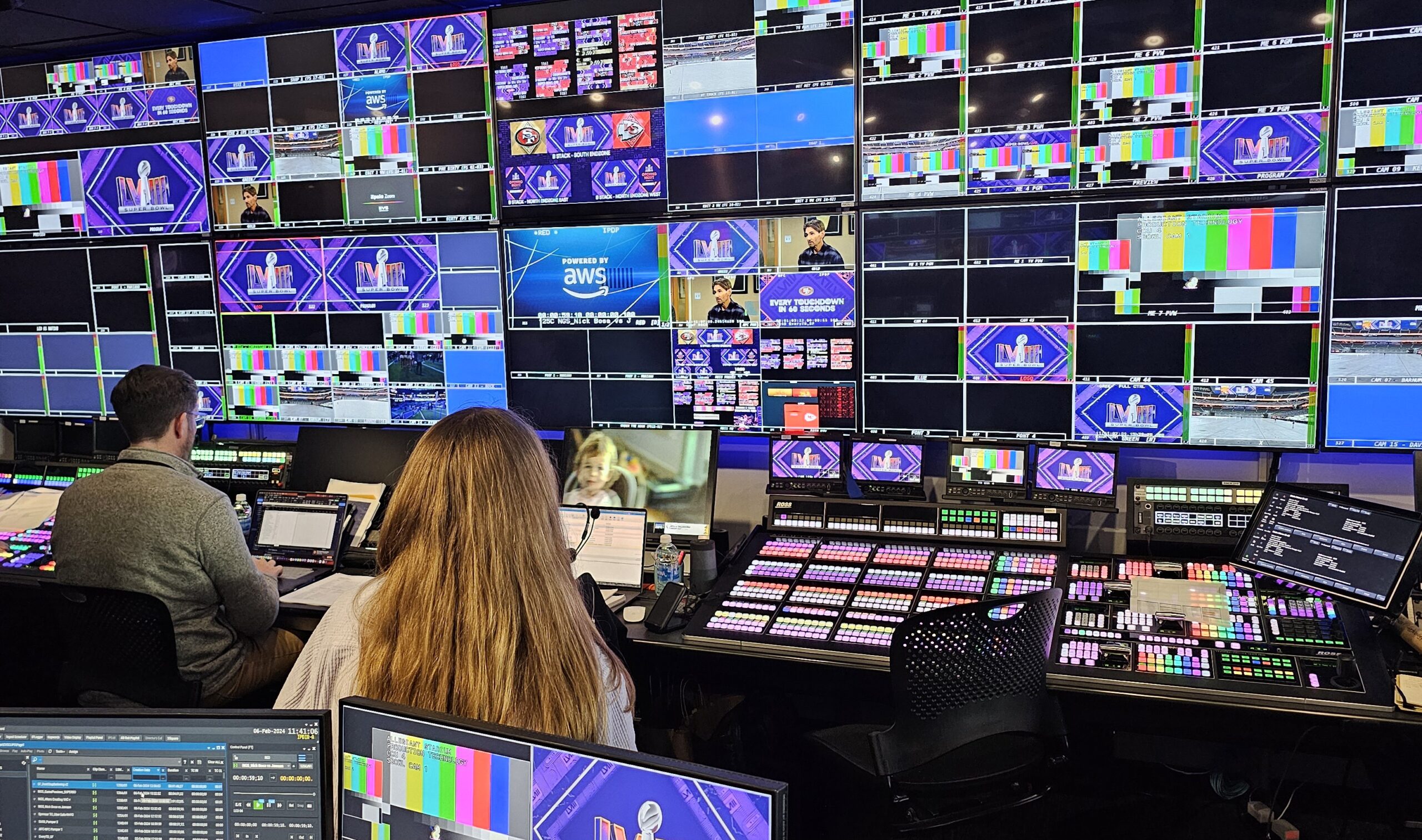Super Bowl LVIII: Van Wagner’s Bob Becker on First Opening Night at the Super Bowl Venue and Prepping for the Big Game
Evolving HDR workflow is among changes in the in-venue presentation this year
Story Highlights
Van Wagner Productions President Bob Becker and the Van Wagner team will once again be at the center of a Super Bowl game presentation for fans in the stadium. This year, though, has seen some changes: the Opening Night was held in the stadium for the first time ever; Van Wagner’s remote facility in Raleigh, NC, did a remote production for the NFL Pro Bowl in Orlando last weekend; and HDR workflows continue to evolve. Becker spoke with SVG about those happenings, working in Allegiant Stadium, and much more.
This was the first year that the NFL held its Opening Night at the stadium that the game is played in. Are you guys involved with that show, and how did things go?
Yes, we always do that show. In the past, it was in an arena around town, and a quarter of our team would disappear on Thursday and just worry about that while the other part of the team stayed back and prepared for the Super Bowl. The biggest challenge for us — not only us but the Super Bowl events team, grounds crew, logistics, operations, other vendors, and everyone else — [was that] we had to put the brakes a little bit on the Super Bowl because we were in the same building. We used our full Super Bowl team to concentrate on Opening Night for a few days. But we have such great people that just get the job done, and it was an amazing experience and a full-on spectacle — quite frankly, the best Opening Night we all have done.
Did it give you a chance to kick some tires, so to speak, for Sunday’s game?
Oh, for sure. We also had to create some new graphic renderings that said Opening Night. But we did find some gremlins in the system. Typically, we’d find them later in the week during something like cut-to cue or rehearsal. But we found some issues in the comms systems and some issues with the feeds. They are just normal, run-of-the-mill issues that we run into with any live event, but we figured them out early so we should have a perfect few days leading into the Big Game.
Each building brings something different to your production. How is this venue different?
Every Super Bowl brings its challenges because we’re a group that comes in and takes over somebody else’s control room and integrates with the staff and our show does not mirror the Raiders’ show at all. The way the boards are configured, the way things are scheduled, the way things are called — it’s completely different. That’s always the challenge: you have an in-house crew that has been working for the Raiders for a whole season, multiple seasons or whatever, and now they have to adapt to a new show. Today is the first big day to start that adaptation where we come in and start laying everything out. We have five days and four hours to kick off [as of this interview].
The good news is, the crew was unbelievable during Opening Night, and that is the same crew that works the Super Bowl. Another positive with this building is [Allegiant Stadium Director, Production Technology,] Aric Carpenter and [Director, Technology Operations,] Justin Lang, who run the room and ran it in Minnesota when we did the Super Bowl in 2018. There’s a lot of familiarity with them, and they knew what they were getting into when we came on board. They had things — cameras and systems — set up and ready for us earlier than we’ve ever had, partially because of Opening Night.
It’s a beautiful stadium. Of course, we don’t have an Oculus, but we have an amazing board here in the South and, on the North, two big boards flanking the torch. It allows us to have an unbelievable canvas to do a great show that our editors and designers and producers put together for the Super Bowl. Our VP, Productions, Brian Scott and his team have done an amazing job putting the complete creative package together. The fans will see quite a visual spectacle on Sunday!
This is an HDR building, and CBS is also doing HDR. How does that change things?
A lot of the buildings now are going with an HDR workflow, and our guys had to come in early in December to work with the staff here to dial in these boards to match the true colors. A lot of effort went into that, and kudos to our VP, Creative, Ryan Kehn and our guys for working with the Allegiant staff to dial these boards in for an HDR workflow because CBS is all-HDR and we share resources. That makes it seamless integration, and you’re going to see high-quality video on these boards and without a lot of conversion on our end because we’re all living in the same world.
How many CBS cameras do you have access to?
We can take as many as we want, but we’ll take 17 live into the switcher and two or three times that live into the router because we have multiple EVS stations that do packages and replays. That team is taking in all the feeds from CBS and putting together these great packages.
How has the whole game presentation for this game evolved over the past 15 years? There was a time when it was a much more conservative show.
We often laugh because pictures from 15 years ago pop up on your Facebook feed and our Super Bowl crew was five people. This year, we’ve traveled 100 for the game-presentation show, and there are more than 90 of the local crew.
We have a small army for game presentation, and you ask yourself why is that? It’s because the expectations today are to give the people here in the stadium an unbelievable experience, and we stretch it to the limit from the great music to the videos to having the ribbon boards complement a video with lights flashing.
Can you talk about integrating with the Ross Video team who is also here with you?
They’re part of our travel team. We consider Ross family and bring them everywhere. I mean, every event we do. Guys on that team — like Andrew Lahey, manager, solution specialist — have the technical ability to take these boards and do what we want. Leahy, Solution Specialist Stefan Tribble. and Greg Kuh manager, content and workflow, are great because we present them with a challenge and they just do it. I want the board to do this. Okay, no problem. Give me 20 minutes. Boom, boom, boom, boom. And there it is, right?
That’s the difference you see between the local home show and the show we have. We have different needs. We have to make sure everything we do matches and is non-biased and all that good stuff to provide that level of equality for both teams. Ross helps us do that. I mean, simple things like needing a lower-third bar that shows time remaining. Boom, they make it. It’s amazing.
I know from speaking with others about HDR that there are still issues around graphics. Are your graphics done in SDR and then mapped to HDR?
Lahey: Everything for the boards is being done in SDR, and we’re doing the conversion for HDR. The graphics file formats are limited on the HDR side, and there are things like sponsors and getting proper logos and HDR content. Editing is also done in SDR. When we came in December, we did a lot of color tests to dial in the HDR.
Last year, you opened a remote-production facility in Raleigh, NC. How has that team been involved?
We just did the Pro Bowl from Raleigh, and I think it is the first remote game presentation. It was a high-level success, and we had positive feedback from the NFL.
Who was onsite?
We had a producer, associate producer, and a couple editors. Of course, you’ll always have your camera operators there — we had four — and all that normal game-presentation stuff. But the TD, the Ross Xpression and operator, the audio mixer were all in Raleigh. It was probably 10 onsite and 10 back home.
What are the challenges in a remote game-presentation show?
The latency is always the biggest challenge: if the guy scores a touchdown, the videoboard needs to show the guy scoring a touchdown immediately, not a half a second or a second later. For the Pro Bowl, our engineers decided to put the switcher guts onsite and just remote into the switcher via IP. We would punch up the switcher in Raleigh, but the guts were in Orlando. That way, all the latency went away. We also had an LMG production truck onsite.
Do you see more opportunities around remote production?
Yes. We just signed a deal with Athletes Unlimited to get us into the broadcast world with their basketball and lacrosse. And we just got a new development guy, Will Wright, who’s going to push us to get into that space.
We are also far along in discussions with a couple of exciting clients holding events this spring and summer that will be nationally televised. So things are really looking up on that side, on top of the game-presentation side. I’m very excited.
Looking to Sunday, what’s it like right before kickoff?
First, it’s always a pleasure to be here and do this thing and work with the NFL and be a part of it. I still get choked up on kickoff after all these years. It’s hard to make that first call because you work so damn hard to get to that point. We’ve been getting home at 11 p.m., back in at 7 a.m.; there’s a lot of pressure in this business. Then, finally, on Super Bowl Sunday, you’re like, ‘Wow, finally here.’ Then you do it, go home, and move on to the next one.


